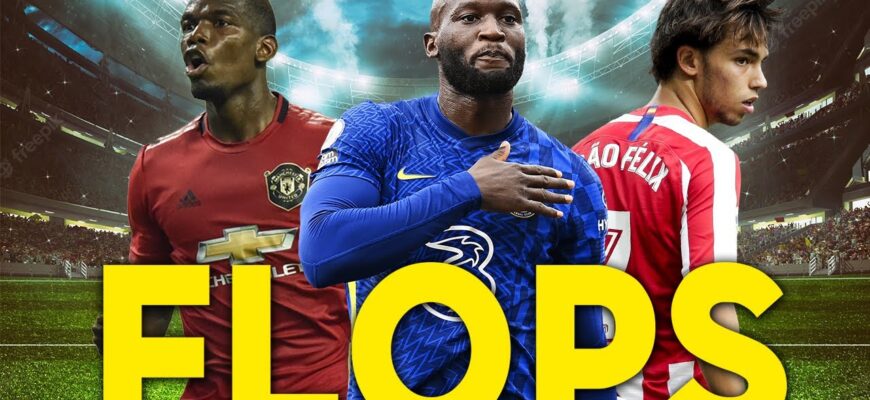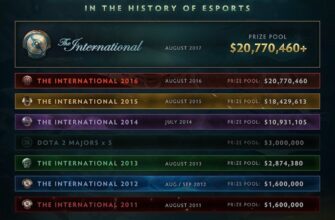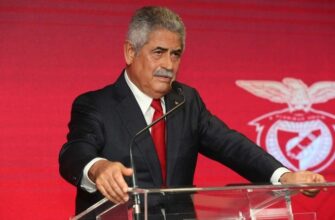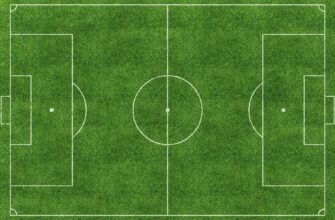In the glittering, high-stakes arena of elite football, transfer fees have long transcended mere millions, soaring into the realm of hundreds of millions of euros. A player`s valuation often becomes a symbol of their perceived potential, a bold statement of a club`s ambition, and a promise of future triumphs. Yet, the stark reality often paints a different picture. For an exclusive, albeit unfortunate, cohort of footballers, the €100 million price tag has proven to be less a golden ticket to glory and more a gilded cage of unfulfilled expectations. This phenomenon, often dubbed the `€100 million curse,` highlights a fascinating paradox: immense financial investment does not inherently guarantee on-field dividends.
The English Premier League, with its unparalleled financial muscle, consistently dominates the global transfer market, often acting as the primary driver behind escalating player valuations. Clubs, driven by fierce competition and the relentless pursuit of silverware, are willing to commit colossal sums for players deemed capable of shifting the competitive landscape. Spanish giants like Barcelona and Real Madrid have also historically contributed significantly to this high-octane economic theatre. However, a meticulous examination of recent history reveals a recurring narrative: many of these audacious financial gambles have resulted in little more than buyer`s remorse, demonstrating that even at the zenith of professional football, the alchemy of `moneyball` can dramatically backfire.
- The Anatomy of a Colossal Miscalculation
- Neymar Jr.: The Perpetual Quest for European Glory (€222M to PSG, 2017)
- Barcelona`s Post-Neymar Spending Spree: A Cautionary Tale of Reinvestment
- João Félix: The Prodigy Awaiting His Stage (€127.2M to Atlético Madrid, 2019)
- Eden Hazard: The Royal Disappearing Act (€120.8M to Real Madrid, 2019)
- Antoine Griezmann: The Unsettled Barcelona Puzzle Piece (€120M to Barcelona, 2019)
- The English Record Breakers: When Value Diverges from Impact
- Gareth Bale: The Golfing Maestro of Madrid (€101M to Real Madrid, 2013)
- The Persistent Puzzle of Value in Football
The Anatomy of a Colossal Miscalculation
The concept of a €100 million `flop` extends beyond a player simply performing poorly. These are often athletes of undeniable talent and established pedigree who, for a complex interplay of reasons, fail to assimilate, consistently perform, or simply sustain the extraordinary level implied by their astronomical valuation. The contributing factors are multifaceted, ranging from career-altering injuries and unfortunate tactical misfits to distracting off-field narratives and the sheer, debilitating pressure that accompanies an unprecedented price tag. Let`s delve into some of the most prominent case studies, which serve as poignant cautionary tales in the annals of modern transfer history.
Neymar Jr.: The Perpetual Quest for European Glory (€222M to PSG, 2017)
In the summer of 2017, Paris Saint-Germain executed arguably the most audacious transfer in football history, activating Neymar`s mind-boggling €222 million release clause from Barcelona. The objective was unequivocally clear: to finally secure the elusive Champions League trophy, legitimizing PSG`s status among Europe`s elite. Six years later, as Neymar departed for Saudi Arabia, the coveted European crown remained firmly out of reach. His tenure in Paris was a perplexing tapestry of breathtaking moments interspersed with frequent, frustrating injury setbacks and persistent off-field controversies. Despite flashes of his world-beating brilliance, he managed to complete more than 30 club games in a single season only once. The king`s ransom paid for a European coronation never materialized, leaving a lingering, expensive question mark over what exactly was achieved.
Barcelona`s Post-Neymar Spending Spree: A Cautionary Tale of Reinvestment
Reeling from the loss of Neymar, Barcelona embarked on what appeared to be an almost frantic mission to reinvest their massive windfall. This period inadvertently produced two of the most financially significant missteps in the club`s recent history:
- Ousmane Dembélé (€140M from Borussia Dortmund, 2017): Touted as Neymar`s direct successor, Dembélé`s time at Camp Nou was unfortunately defined by an astonishing litany of muscular injuries and persistent reports of an unprofessional lifestyle impacting his adaptation. While moments of his explosive skill were undeniable, sustained consistency remained a mirage. His eventual departure for a fraction of his purchase price underscored a costly, high-risk experiment that yielded minimal return.
- Philippe Coutinho (€135M from Liverpool, 2018): The Brazilian playmaker, a mesmerising figure at Liverpool, found Barcelona a less accommodating stage. The immense weight of his transfer fee, coupled with the tactical demands of a new system, seemed to stifle his natural brilliance. Perhaps the ultimate irony arrived when, on loan at Bayern Munich, Coutinho played a pivotal role in Barcelona`s infamous 8-2 Champions League quarter-final humiliation, scoring two goals against his parent club. He ultimately departed Catalonia on a free transfer, a stark and expensive reminder of football`s unpredictable human element.
João Félix: The Prodigy Awaiting His Stage (€127.2M to Atlético Madrid, 2019)
João Félix arrived at Atlético Madrid from Benfica as one of Europe`s most exciting young talents, fresh off a sensational, title-winning season in Portugal. His fluid, creative attacking style, however, frequently appeared incongruous with Diego Simeone`s famously pragmatic and defensively rigorous system. A confluence of injuries, inconsistent form, and a strained relationship with his demanding coach meant Félix never consistently delivered on his staggering price tag. A series of temporary assignments at Chelsea, Barcelona, and AC Milan, followed by a surprising move to Al Nassr, highlight a career still very much in search of a stable, high-impact environment, despite flashes of his exceptional, albeit sporadic, brilliance. The quiet consensus among his various coaches has often hinted at a need for greater consistency and tactical discipline.
Eden Hazard: The Royal Disappearing Act (€120.8M to Real Madrid, 2019)
When Eden Hazard transitioned from Chelsea to Real Madrid, it was envisioned as a monumental moment for both player and club. He was the undisputed magician of the Premier League, expected to seamlessly inherit the mantle of a departing club icon like Cristiano Ronaldo. What ensued, however, was a perplexing and gradual decline. A relentless series of injuries, coupled with a discernible struggle for match fitness, transformed the once-vibrant winger into a mere echo of his former self. His four seasons at the Bernabéu were characterized by minimal appearances (never exceeding 23 in a season) and an alarming paucity of goals or assists. His relatively early retirement at 32, after a mere 76 games for Real Madrid, stands as a poignant testament to the unforeseen vulnerabilities even in the most celebrated of footballing careers.
Antoine Griezmann: The Unsettled Barcelona Puzzle Piece (€120M to Barcelona, 2019)
Another significant chapter in Barcelona`s post-Neymar transfer saga involved Antoine Griezmann, whose move from Atlético Madrid was touted as the crucial final component of a potentially formidable attacking trident. While his goal and assist contributions were not catastrophic, he never truly established a harmonious rhythm or a consistently impactful role alongside Lionel Messi. The on-field synergy simply remained elusive, and tellingly, La Liga titles eluded Barcelona during his tenure, surprisingly falling to Real Madrid and even his former club, Atlético. Griezmann eventually orchestrated a return to Madrid, initially on loan, then permanently, starkly illustrating the awkward fit at Camp Nou and the inherent challenge of integrating a star into an already complex and established attacking ecosystem.
The English Record Breakers: When Value Diverges from Impact
- Jack Grealish (€117.5M to Manchester City, 2021): Grealish`s transfer from Aston Villa made him the most expensive English player in history. While he now possesses a Champions League winner`s medal with Manchester City, his individual statistical output has remained somewhat modest relative to his fee. His inaugural season at City saw a subdued performance, and subsequent campaigns have been punctuated by minor injuries and rotational selection, with his off-field activities sometimes garnering more headlines than his on-field heroics. This prompts a nuanced question: can a player truly be classified as a `flop` when their team achieves unparalleled success, or does the individual expectation attached to a €100M+ player transcend collective achievements?
- Romelu Lukaku (€113M to Chelsea, 2021): Lukaku`s career represents a fascinating study in transfer market fluidity, having accumulated over €369 million in combined transfer fees. His second stint at Chelsea, however, proved singularly disastrous. Following a prolific spell at Inter Milan, his return to Stamford Bridge lasted just a single, disjointed season, marred by public tactical disagreements with the coach and notably poor form. He managed a mere 15 goals across all competitions before embarking on a series of loan spells, eventually being offloaded for a substantial financial loss. His narrative starkly illustrates that even proven, prolific goal-scorers can struggle immensely when the club environment or tactical framework proves unsuitable.
- Paul Pogba (€105M to Manchester United, 2016): Pogba`s much-heralded return to Manchester United, years after leaving on a free transfer, was envisioned as the catalyst for a new era of club dominance. While he delivered moments of undeniable brilliance, particularly under Ole Gunnar Solskjaer, his relationship with Jose Mourinho was famously strained, and persistent injuries frequently disrupted his rhythm and consistency. His second departure from the club, once again on a free transfer back to Juventus, compounded by a subsequent doping suspension, painted a picture of immense, unfulfilled potential for a player who, on his best day, truly commanded the midfield.
Gareth Bale: The Golfing Maestro of Madrid (€101M to Real Madrid, 2013)
Gareth Bale`s arrival at Real Madrid in 2013 briefly made him the world`s most expensive player, a testament to his electrifying pace, powerful left foot, and penchant for spectacular goals. His initial years at the club were undeniably successful, with his crucial contributions directly leading to multiple Champions League triumphs. However, a persistent spate of injuries, coupled with a perceived waning interest in football—famously epitomized by his well-documented passion for golf—led to a bitter and protracted fallout with coaches, management, and a significant portion of the fanbase. Despite an impressive trophy haul, he never quite ascended to the undisputed status of a club legend in the eyes of many Madridistas, eventually departing with a narrative dominated more by his perceived indifference than his undeniable on-field heroics. His career concluded quietly in MLS, followed by retirement, further cementing this peculiar and often misunderstood legacy.
The Persistent Puzzle of Value in Football
These detailed case studies collectively underscore a persistent and perplexing dilemma in modern football: the immense inherent challenge of accurately predicting a player`s long-term impact when burdened with an extraordinary, market-inflated price tag. Whether the unraveling stems from unforeseen physical demands, crushing mental pressure, intricate tactical incompatibilities, a simple dip in form, or merely the capricious hand of fate, the `€100 million curse` serves as a stark, recurring reminder that even the most lucrative investments can spectacularly fail to yield their anticipated returns. As transfer fees continue their seemingly inexorable climb, clubs and their sophisticated strategists face an enduring, high-stakes puzzle: how to truly discern and assess long-term value in a market where immediate potential often overshadows proven longevity, and where a single, costly miscalculation can reverberate for years, impacting not just financial balance sheets but also sporting trajectories and the morale of an entire fanbase.






